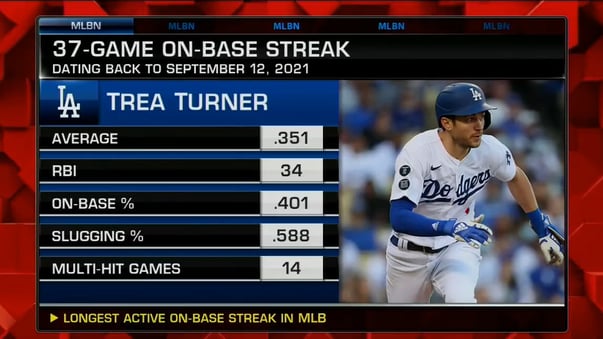Is Your Business Ready for Google and Yahoo's New Email Requirements?
Imagine your managing a baseball team. Your objective is indeed to be the champion. But measuring only if you are a champion or not, just does not make sense. Even a toddler playing ball on the street with his friends knows your objective is to win the game, so what most of us measure is how many games are you winning and how many are you losing.
So, is it wrong to measure championships or won games? Well, it just depends on the timeframe and context. But the first thing to notice is that they are both correlated. If you win more games, the more likely you are to win a championship. This is what leading and lagging indicators are. Winning games is a leading indicator of winning championships –in this case the lagging indicator.
Leading vs lagging indicators
Let’s take one step back and define what are leading and lagging indicators:
Leading indicators are metrics that change before the result and hence provide early signals or warnings of future events. In this sense, leading indicators are used to forecast future results and are valuable for proactive decision-making.
Lagging indicators are metrics that change after an event has already occurred or the consequence of past actions has been confirmed. Hence, they provide retrospective insights and are used to gauge the success or effectiveness of past decisions.
If we are not winning a lot of games, at least more wins than our competition, then is less likely that we will end up winning the championship. If we are still at mid-season, we can understand that we must change our strategy before it is too late.

But at this point, our context and timeframe have shifted. At the top-most level, measuring the success of a baseball franchise is all right if based on championships, but at the season level, we need another indicator to gauge performance, for example, wins. But then again, if we are not winning games and must make decisions, these indicators are worthless. Shifting our context, now we consider won games as a lagging indicator and must find the leading indicators that forecast our result.
Just look at the broadcast screen of any baseball game and you will start getting a sense of which leading indicators are used in baseball. For example, the regular screen will always show runs, hits, errors, current inning, outs, and batter count. All of this helps you better gauge the current situation of the game.

But other times, more specific player stats will be shown that can help you gauge the performance of that individual player, perhaps leading indicators on his support in achieving lagging indicators of the team.

https://twitter.com/MLBNetwork
Key process indicators (KPIs) for a strategy to increase sales
So, if this is all obvious, even common sense, why is it that in sales teams many times we only measure monthly revenue or quotas?
I mean, it is indeed the perfect lagging indicator, necessary to pay sales commissions, but one that will not help in making good proactive decisions. What you need to monitor every day and every week during the month, to gauge if that month’s revenue targets will be met, are different metrics related to how well your team is doing their jobs to achieve those targets.
Which would be good examples of KPIs to be used by our sales teams?
Leading Indicators:
- New generated leads.
- Number of deals in the pipeline and average size.
- Conversion rates per stage and/or rep.
- Marketing email engagement.
- Number of sales calls and meetings scheduled.
- Number of demos or meetings performed.
- Sales cycle length.
Lagging Indicators:
- Sales Revenue per period.
- Sales quota achievement.
- Customer Acquisition Cost (CAC).
- Churn rate, retention, returning customer rate.
- Customer satisfaction.
Depending on your business model, your function within the company, and your context, you might use different indicators and they could even shift between leading and lagging.
But it is important to choose carefully. For example, if in baseball someone decided that a good leading indicator for winning games was how many times a batter swings at the ball, then you could have led your players to swing more or swing less. But batting performance is not about counting the number of swings they make but swinging when it matters; so choosing the wrong indicator and making a strategy around it could end up hurting your performance.
Once you choose the right type and quantity of KPIs, it is of course necessary to monitor as precisely, frequently, and in detail as possible.
Monitor KPIs
Now-a-days, the right software platform is the key to being able to monitor leading and lagging KPIs and use them in your decision-making. For marketing and sales teams, a CRM software platform such as HubSpot provides all the solutions for your needs, not just for monitoring KPIs, but at the same time to provide tools for your team to be more productive. Then, the platform is not a painful logging system with no operational advantage, but rather a tool that helps your team do more with less.
Some of the characteristics you might seek in a good software to monitor your KPIs include:
- Customization to your needs.
- Data integration from different sources to centralize and analyze all your data in one place.
- Real-time monitoring to react quickly to changing conditions and make timely decisions.
- Effective and interactive data visualization to present data in a clear manner.
- The ability to set up custom alerts and notifications for specific conditions.
- Historical data analysis and trend analysis.
- User access control and security.
- Scalability to accommodate your growing data needs.
- User-friendly interface for non-technical staff without extensive training.
- Data export and reporting.
- Among others.
Once you can monitor your KPIs easily and in real-time, you will be able to experiment and test strategies, calibrate efforts, and make better decisions day-to-day before it is too late.
Contact Us
We’d Love To Hear From You!
If you have any questions or comments about this article or are interested in learning more about our business consulting services, we invite you to contact us. We'll be happy to assist you.
Tags:
%20(1).jpg?width=500&height=500&name=justin-morgan-D2TZ-ashGzc-unsplash%20(1)%20(1).jpg)

.jpg?width=500&height=500&name=myriam-jessier-eveI7MOcSmw-unsplash%20(1).jpg)